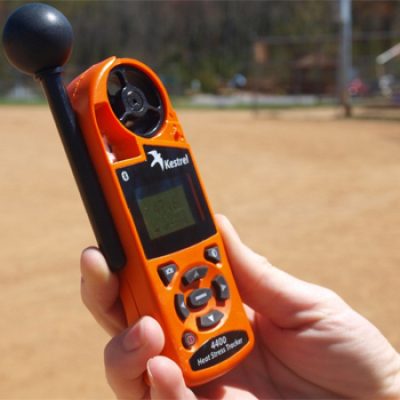Home » Course Layouts » Free Course Layout Udemy
Workers indoors or outdoors are susceptible to stress in high temperature environments, requiring an instrument that can monitor temperatures, calculate possible heat stroke conditions, and alert the workers so they can stop, cool down, drink water, etc. The Heat Stress instrument measures WBGT (Wet Bulb Globe Temperature) for both indoor and outdoor environments.
0
29
English
English [CC]
- Learn basic syntax that can apply to any language.
- Learn what is a programming language and the basic concepts for beginners.
- Understand what is Javascript in it's truest form.
- Know the basic syntax of Javascript.
- Know some hidden quirks in Javascript.
Description
What is Physiological Monitoring?
- A basic way to measure the level of an individual’s heat strain in response to heat stress conditions. This includes, but is not limited to, heart rate monitoring & body temperature measurement.
- It does not include parameters that may be considered medical monitoring (measuring blood pressure, oxygen saturation, urine testing, or cardiac rhythm).
Physiological Monitoring may be required when:
- WBGT monitoring is not sufficient or feasible.
- Work will occur that is likely outside of the established work/rest regimens
- Additional information on worker heat stress is needed
- Work will occur in semi- or impermeable clothing ensembles such as polyethylene coated Tyvek or vapor barrier coveralls
- Heavy to very heavy work is performed, regardless of clothing level
Hanford Tank Farms Thermal Stress Issues
- Extended outdoor work in anti-contamination clothing and respiratory protection
- Desert environment (high radiant loading/low humidity)
- Tropical work shift schedule options
- Record setting heat levels in 2014 and expected in 2015
- High exertion work requirements
- Past difficulty implementing engineering and admin. controls as part of planned work
- Aging workforce/high bump and roll influx of newer workers
- Worker job jeopardy concerns
- Bargaining unit labor contract issues
- Legacy issues of prior programs and practices
- Past reliance on ‘self-identification’ of heat stress symptoms
Course content
-
- Physiological Monitoring 00:20:00
- Monitor for Heat Stress 00:10:00
- What is a Best Practice 00:10:00
- Recent Guidance 00:15:00
-
- Physiological Monitoring for Thermal Stress 00:35:00
- Changes to Program Elements 00:30:00
- What is Physiological Monitoring? 00:40:00
- Temperature Monitoring 00:30:00
- Physiological Monitoring Tympanic Temperature 00:10:00
- Theory of Operations 00:10:00
- Thermoscan Readings & specification 00:20:00
- Examples of Polar Heart Rate Results 00:20:00
- Heat Stress Monitoring Data 00:10:00
- Results of Physiological Monitoring 00:10:00
- Purpose of the Standards Around the World FREE 00:30:00
- British Standards FREE 02:00:00
- European Standards FREE 02:00:00
N.A
- 5 stars0
- 4 stars0
- 3 stars0
- 2 stars0
- 1 stars0
No Reviews found for this course.
Instructor
OpenCoursa
Accessible Education for Everyone
5
5
6
24218
4637
We are an educational and skills marketplace to accommodate the needs of skills enhancement and free equal education across the globe to the millions. We are bringing courses and trainings every single day for our users. We welcome everyone woth all ages, all background to learn. There is so much available to learn and deliver to the people.
Explore Free Courses
Access valuable knowledge without any cost.
{"title":"","show_title":"0","post_type":"course","taxonomy":"course-cat","term":"engineering-skills,health-and-safety","post_ids":"","course_style":"free","featured_style":"course6","masonry":"","grid_columns":"clear4 col-md-3","column_width":"268","gutter":"30","grid_number":"4","infinite":"","pagination":"","grid_excerpt_length":"20","grid_link":"1","grid_search":"0","course_type":"","css_class":"","container_css":"","custom_css":""}












